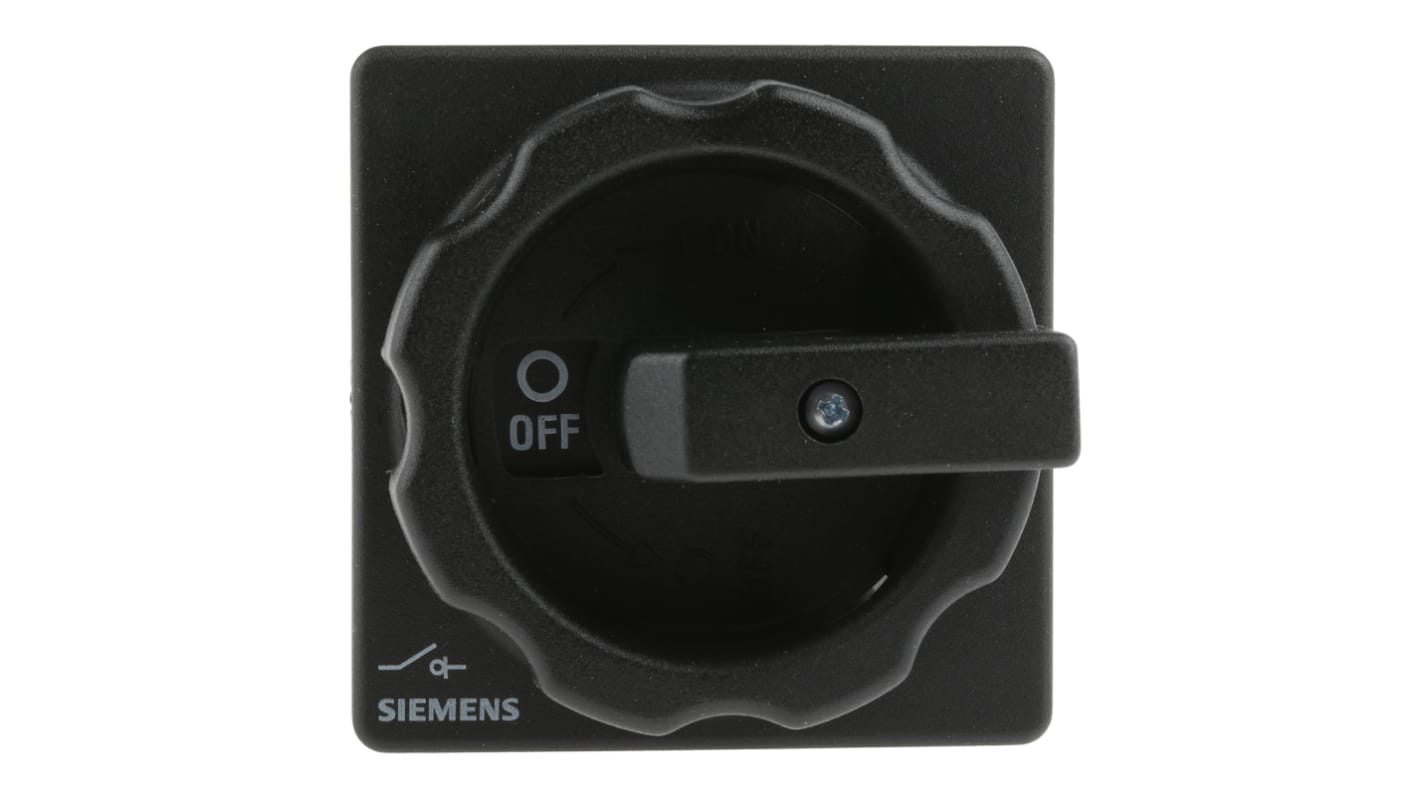Siemens 3P Pole Panel Mount Isolator Switch - 32A Maximum Current, 11.5kW Power Rating, IP65
- RS Stock No.:
- 518-7017
- Distrelec Article No.:
- 304-10-567
- Mfr. Part No.:
- 3LD2203-0TK51
- Brand:
- Siemens

Subtotal (1 unit)*
£32.19
(exc. VAT)
£38.63
(inc. VAT)
FREE delivery for orders over £50.00
In Stock
- 50 unit(s) ready to ship from another location
- Plus 20 unit(s) shipping from 27 October 2025
- Plus 999,999,979 unit(s) shipping from 17 November 2025
Need more? Click ‘Check delivery dates’ to find extra stock and lead times.
Units | Per unit |
|---|---|
| 1 + | £32.19 |
*price indicative
- RS Stock No.:
- 518-7017
- Distrelec Article No.:
- 304-10-567
- Mfr. Part No.:
- 3LD2203-0TK51
- Brand:
- Siemens
Specifications
Technical Reference
Legislation and Compliance
Product Details
Find similar products by selecting one or more attributes.
Select all | Attribute | Value |
|---|---|---|
| Brand | Siemens | |
| Number of Poles | 3P | |
| Maximum Current | 32A | |
| Mounting Type | Panel Mount | |
| IP Rating | IP65 | |
| Power Rating | 11.5kW | |
| Voltage Rating | 690V ac | |
| Electrical Phase | 3 | |
| Handle Colour | Black | |
| Auxiliary Contacts Available | No | |
| Range | SENTRON | |
| Switch Rating | 640A | |
| Length | 83mm | |
| Width | 67mm | |
| Depth | 92.5mm | |
| Maximum Operating Temperature | +55°C | |
| Terminal Type | Screw | |
| Minimum Operating Temperature | -25°C | |
Select all | ||
|---|---|---|
Brand Siemens | ||
Number of Poles 3P | ||
Maximum Current 32A | ||
Mounting Type Panel Mount | ||
IP Rating IP65 | ||
Power Rating 11.5kW | ||
Voltage Rating 690V ac | ||
Electrical Phase 3 | ||
Handle Colour Black | ||
Auxiliary Contacts Available No | ||
Range SENTRON | ||
Switch Rating 640A | ||
Length 83mm | ||
Width 67mm | ||
Depth 92.5mm | ||
Maximum Operating Temperature +55°C | ||
Terminal Type Screw | ||
Minimum Operating Temperature -25°C | ||
- COO (Country of Origin):
- DE
Siemens Isolator Switch, 3 Poles, 32A Current Rating - SENTRON Series - 3LD2203-0TK51
Use this isolator switch from Siemens to cut the power to an electrical circuit when you're carrying out maintenance. It's easy to operate – simply turn the black handle between the on and off positions. Thanks to a current rating of 32A, it's suitable for use in high-power systems. A long mechanical service life of 100,000 operating cycles means you can rely on this product for long-term performance. You'll commonly find it used with conveyor belts, process and packaging equipment and emergency stop systems.
Features & Benefits
• IP65 rating means it's dust-tight and protected against low-pressure water jets
• Compact size of 83 (H) x 67 (W) x 92.5mm (D) is easy to slot into busy setups
• Compact size of 83 (H) x 67 (W) x 92.5mm (D) is easy to slot into busy setups
What's the operating temperature range of this isolator switch?
This isolator switch has a wide operating temperature range between -25°C and +55°C, so it's a good choice for use in harsh industrial environments.
What's the difference between a fused and non-fused isolator switch?
A fused isolator switch like this one breaks the circuit using a fuse, while non-fused types break the circuit using a rotary switch or knife-blade disconnect. Fused isolator switches can handle higher loads than non-fused alternatives, so are suitable for use in demanding applications.
